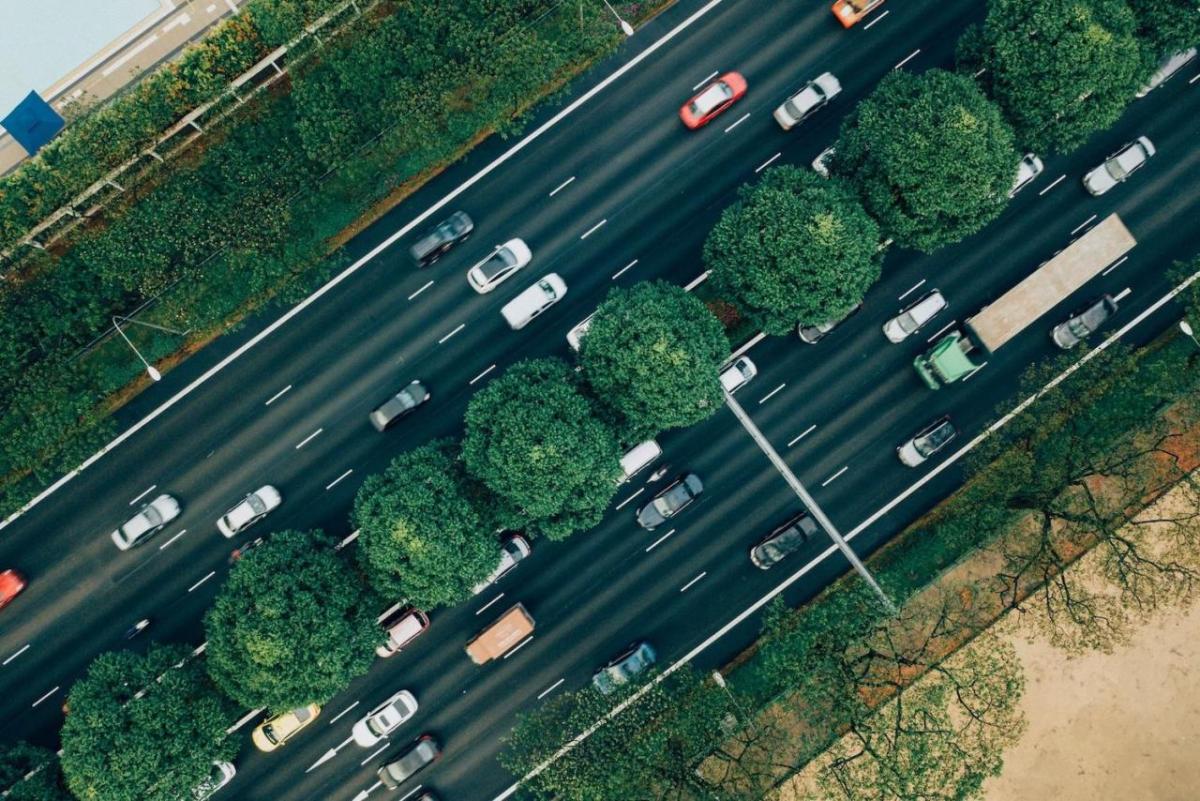This Model Reimagines Fueling for Efficiency
Words by Maggie Kohn

Originally published on TriplePundit
U.S. e-commerce sales continue to grow by leaps and bounds, topping the $1 trillion mark in 2022, according to an analysis of U.S. Department of Commerce figures. That means more and more delivery trucks on the road.
UPS delivered an average of 24.3 million packages per day in 2022, totaling 6.2 billion packages across the year, while Amazon saw its sales increase by 9 percent to $514 billion. At the same time, both are among the many companies committing to reach net-zero greenhouse gas emissions: Amazon pledged to go net-zero by 2040, and UPS is targeting 100 percent carbon neutrality by 2050.
Of course, there is no single pathway to reaching net-zero. Rather it will require a tapestry of solutions — from converting fleets to electric vehicles and increasing the use of rail, to adopting alternative fuels including biofuels and hydrogen.
One player that is focused on helping logistics companies get to zero is Booster, a leading tech-enabled mobile energy delivery company in the United States. The company’s mini-tankers deliver fuel that comes directly from distribution terminals to customers. By its estimates, this can help customers lower carbon emissions by up to 14 percent — or 587 pounds of carbon emissions per vehicle — by avoiding trips to the gas station. It also gives countless hours back to fleet drivers who typically need to refuel every day.
Booster also points to the benefits of reduced gas station-related pollution. Leaks from eroding underground storage tanks can leach into soil, contaminate waterways and affect air quality. “The 557,655 leaking storage tanks nationwide release dangerous chemicals into the surrounding air as they age and deteriorate,” said Shenna Bradshaw, general council and VP of people and regulatory for Booster.
So far, the demand for mobile fuel delivery has been strong. Since it began operations in 2015, Booster has seen an average compound annual growth rate of 50 percent in volume and has delivered over 20 million gallons of fuel across dozens of industries and fleets. In addition to logistics giants, corporate customers include a student transportation company and a misshapen produce purveyor. Booster has also supported CalFire with fueling emergency equipment used to fight fires throughout California and first responders during Hurricane Ida in Louisiana.
Another area of Booster innovation is in low-emissions mobile fuel delivery. A key challenge for all vehicle fueling are fugitive emissions: gases and vapors that are accidentally released into the atmosphere during fueling that contribute to climate change and air pollution.
Booster has partnered with the California Air Resources Board as well as local officials to build propriety technologies that help to ensure it fills vehicles using onboard refueling vapor recovery systems. This captures fuel vapors so they are not trapped inside gas tanks and then released into the atmosphere each time refueling occurs. Booster’s solution is unique in the mobile fueling industry and earned the company authority to operate in the strictest emission standard locations.
Delivering the future of decarbonization
While mobile fuel delivery has a role in reducing greenhouse gas (GHG) emissions, the real game-changer will be mobile delivery of sustainable fuels like renewable diesel and mobile charging for electric vehicles (EVs).
In markets where Booster can obtain renewable diesel, such as in California, the company has converted nearly 100 percent of its fleet customers to a sustainable alternative fuel. While that’s notable progress, according to the International Energy Agency, transport biofuel demand is not where it needs to be to attain net-zero emissions by 2050. In a recent report, biofuels accounted for just 3 percent of transport fuel demand. To attain net zero by 2050, demand must grow by 14 percent per year through 2030.
While cost competitiveness of biofuel is one barrier slowing uptake, policy actions could help, Bradshaw of Booster told TriplePundit. She points to policies in California and Washington that incentivize and mandate the use of sustainable fuels. California’s Low Carbon Fuel Standard program, for example, requires a reduction in the carbon intensity of transportation fuels that are sold, supplied or offered for sale in the state through 2030.
Education is also key. “Many fleet managers may not be fully aware of the benefits and availability of renewable diesel and biofuels,” Bradshaw said. “Educating and raising awareness about the environmental advantages, performance equivalence and long-term cost savings of these fuels is essential to promote their adoption. Demonstrating real-world success stories and providing data-driven evidence of the benefits can help overcome skepticism and encourage fleet managers to make the transition.”
Supporting the needs of mixed fleets
Beyond fuels, Booster has also gotten into the on-demand EV charging business to help meet the needs of mixed fleets, starting in California.
Booster's mobile charging service supplements the charging infrastructure at customer locations and provides a backup in the event of temporary blackouts and brownouts. It also helps keep EVs up and running in regions that don't have easy access to charging stations.
“As fleets electrify, Booster can reduce the cost and risk of EV adoption with flexible, mobile charging capacity,” said Frank Mycroft, CEO and co-founder of Booster. “Removing the need to build infrastructure also saves capital costs and speeds transition time and approvals.”
"With more and more governments and enterprise businesses setting aggressive decarbonization targets, Booster's technology is available to provide the full suite of energy solutions," Mycroft said. "Booster is transforming the way energy is delivered and supporting aggressive [action on] climate change, one customer at a time."
This article series is sponsored by Booster and produced by the TriplePundit editorial team.
Image credit: CHUTTERSNAP/Unsplash

